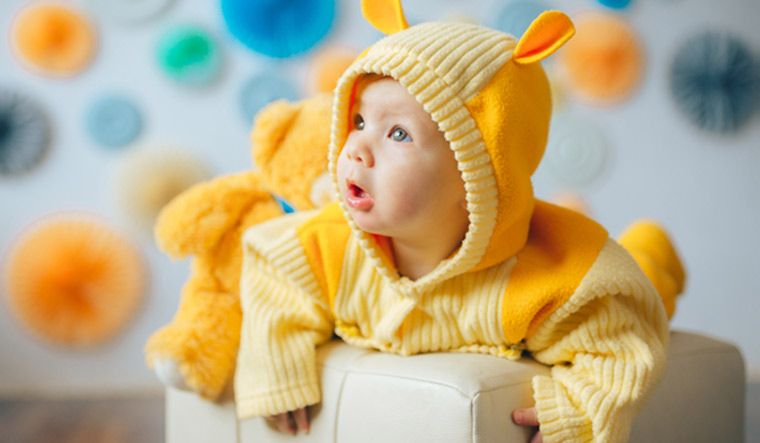Researchers have developed a smart garment that accurately measures the spontaneous movement of infants from the age of five months. The information gathered through the mobility may aid in the early diagnosis of neurological disorders affecting mobility. Since neurological abnormalities should be detected as early as possible, the assessment of spontaneous and voluntary movements of infants is of immense help.
According to the researchers, including those from the University of Helsinki in Finland, the quantitative tracking of children's motility in their natural environment has not been possible.
They said until now children have been primarily qualitatively assessed at the physician's or physiotherapist's practice.
This requires taking into account the fact that the infant's behaviour in the practice setting does not necessarily match that seen at home, the scientists noted.
"The smart jumpsuit provides us with the first opportunity to quantify infants' spontaneous and voluntary movements outside the laboratory. The child can be sent back home with the suit for the rest of the day. The next day, it will be returned to the hospital where the results will then be processed," explains Sampsa Vanhatalo, professor of clinical neurophysiology at the University of Helsinki.
The study has been published in the journal Scientific Reports.
According to the researchers, the data obtained from the smart jumpsuit is valuable, since the detection of abnormalities in the neurological development of infants at an early stage enables early support.
They said the ability of the human brain to form new nerve connections and facilitate new learning is at its strongest in early childhood. Neural plasticity— the ability of the brain to change continuously throughout an individual's life—is at its strongest in early childhood.
These brain functions are benefited by supporting child development, which are targeted at recurring everyday activities, the scientists noted.
According to Vanhatalo, the new method quantifies infant motility as reliably as a human being would be able to do by viewing a video recording.
After the measurement, he said, the infant's actual movements and physical positions will be known to the second, after which the data is analysed using a computer.
"This is a revolutionary step forward. The measurements provide a tool to detect the precise variation in motility from the age of five months, something which medical smart clothes have not been able to do until now," Vanhatalo said.
According to Leena Haataja, another co-author of the study from the University of Helsinki, developmental disorders in today's pressure-dominated world pose a considerable risk that can lead to learning difficulties and obstacles in the competition for education and jobs.
"The early identification of developmental disorders and support for infants' everyday functional capacity in interaction with the family and the growth environment constitute a significant factor on the level of individuals, families and society," Haataja said.
The researchers believe that the smart jumpsuit can also be used in the future for the objective measurement of how various therapies and treatments affect children's development.
(With input from PTI)


